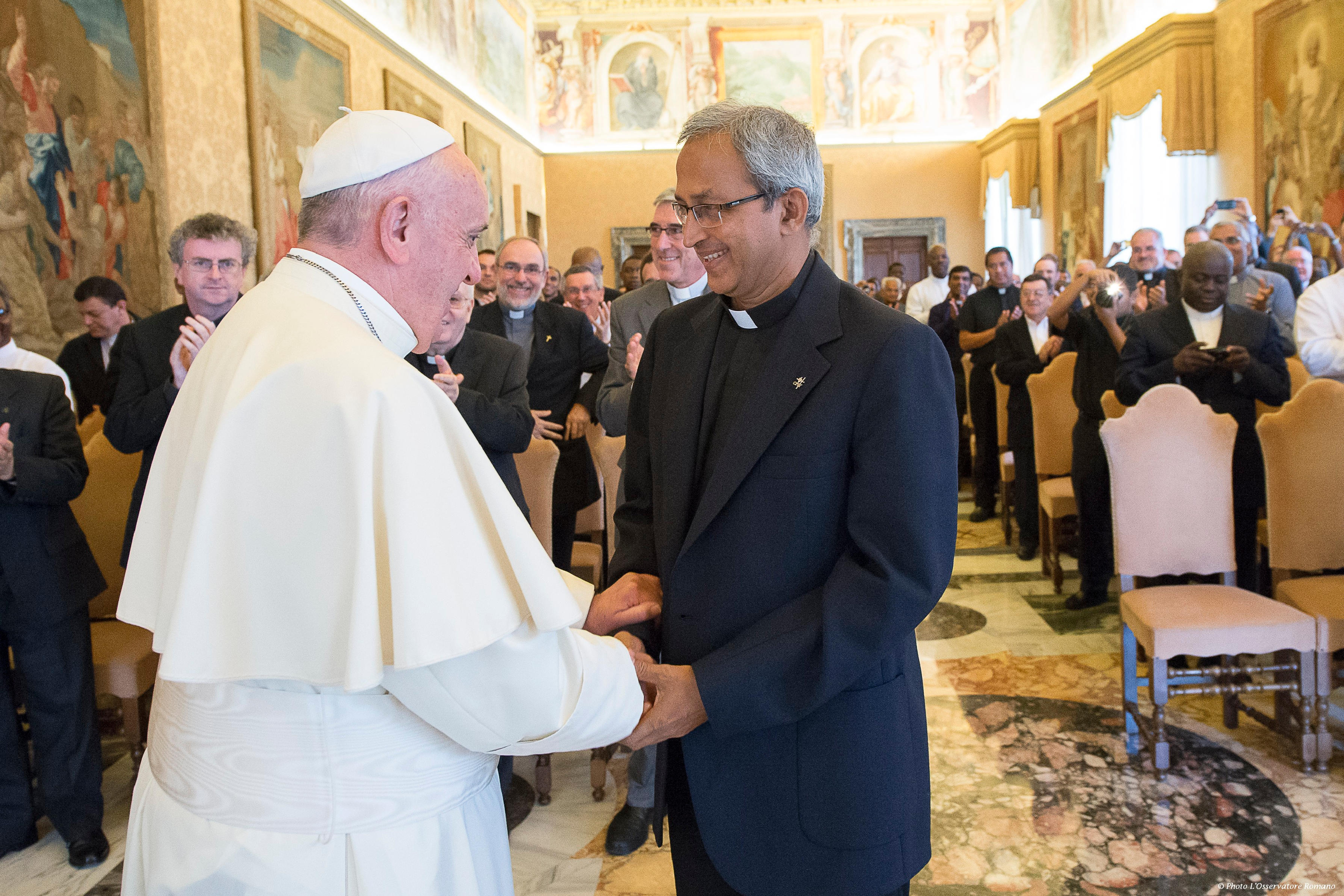Upon canonizing St. Anthony Mary Claret on May 8, 1950, Pope Pius XII described the saint as modest in appearance, but quite capable of winning the respect of even the “great ones” of the earth.
It had been 80 years since the death of this bishop, whose name is still today quickly linked to a religious congregation spread to every continent, the Missionary Sons of the Immaculate Heart of Mary, better known as the Claretians.
Antonio Maria Claret was a missionary in his country, Spain, with humble people of Catalonia and the Canary Islands. From among these young people sprang the idea of the Congregation.
On Sept. 5, a new superior general was elected to lead these religious: the Indian priest Mathew Vattamattan CMF.
For the feast of the saint, which was just marked last weekend, Oct. 24, the new superior-general celebrated a Mass in Rome, in the Basilica of the Sacred Heart of Mary, entrusted to the Claretians.
ZENIT spoke with him:
ZENIT: Father Vattamattam, you recently became Superior General of the Congregation of the Claretian Missionaries. With what spirit do you approach the task?
Father Vattamattam: Well, my election was for me an unexpected mandate from the General Chapter. I see it as a call to walk with my brothers in the spirit of the Gospel as interpreted today by Pope Francis through his testimony of life and teaching. We find ourselves called to be witnesses and messengers of the joy of the Gospel. The congregation is the business of the Holy Spirit. Now I need to learn the art of leadership in the school of the Holy Spirit.
ZENIT: In September you met the Pope. What impressed you most about his speech?
Father Vattamattam: Yes, it was a beautiful moment of affirmation of our charismatic presence in the Church and a challenge to go forth in mission with courage. The Pope told us three words: adorare, camminare and accompagnare (worship, walk and accompany). His message reinforced what the Spirit was urging us in the Chapter. The friendly, unassuming and joyful approach of the Pope made me feel that consecrated life is truly close to the heart of the Church.
ZENIT: What’s the Claretian’s charism?
Father Vattamattam: Our charism in the Church is the ministry of the word through which we communicate the total mystery of Christ to humanity. We do this by sharing the hopes and joys, the sorrows and trials of the people, especially the poor and by joining hands with all those who strive to transform the world according the Gospel vision. St. Claret did it so beautifully in Spain and Cuba in a very difficult time in the 19th Century. We seek to do it today in the same spirit.
ZENIT: What was his contribution in the fight against concubinage and for the formation of priests in the seminary?
Father Vattamattam: When Claret was assigned to Cuba as Archbishop of Santiago, he found a very desolate society with low morals both among the people and the clergy. He found that the ills of the society were ignorance and laxity and the remedy he found was education and mission. He strived by various means to restore the credibility of the clergy and reestablish the integrity of the families. In his letter to Pope Pius IX dated 21st October, 1853, Claret reported about the fruits of two years of missions: 9000 cohabiting couples were married, 200 separated couples were joined and 40,000 children were legitimized. It was a magnificent mission work. He had to pay a big price even by his blood because vested interests were affected by these changes. Back in Spain he took special care of the formation of seminarians in El Escorial near Madrid. For Claret uprightness of the clergy and integrity of family assure a good Christian community.
ZENIT: Is there a link between St. Anthony Mary Claret and the Immaculate Heart of Mary?
Father Vattamattam: There is a very strong link between St. Anthony Mary Claret and the Immaculate Heart of Mary. It was in Italy in 1839 that Claret came in contact with the widespread Marian devotion represented with a heart: Mary as Mother of Beautiful Love or Mother of Divine Love.
Back in Spain, in 1847, Claret founded in Vic the Arch-confraternity of the Heart of Mary with a strongly apostolic character. He was inspired by the conversions taking place through the Arch-confraternity of Our Lady of Victory in Paris. It is not surprising that he calls our Congregation, founded two years later, in 1849, the Congregation of Sons of the Immaculate Heart of Mary.
Claret sees the heart as a symbol of interiority and of love and charity: “Mary is all love. Where Mary is, there is love… The world is like a huge family. Every family has to have a center of direction or head and a center of love or heart… In the Christian world, the head is Jesus Christ and the heart is the Virgin Mary. Mary is, then, the heart of the Church. This is where all works of charity come from.”
ZENIT: What’s the message Saint Anthony Mary Claret sends today to us?
Father Vattamattam: I told my brothers that the best way to express our gratitude to the Founder and love for the Congregation is to take care of one’s own Claretian vocation, nurture it with the brothers in community, and spend oneself joyfully in the mission in creative fidelity to our charism. I also invited them to dare to “go forth” in mission to those peripheries of human existence where our presence is most needed today.



